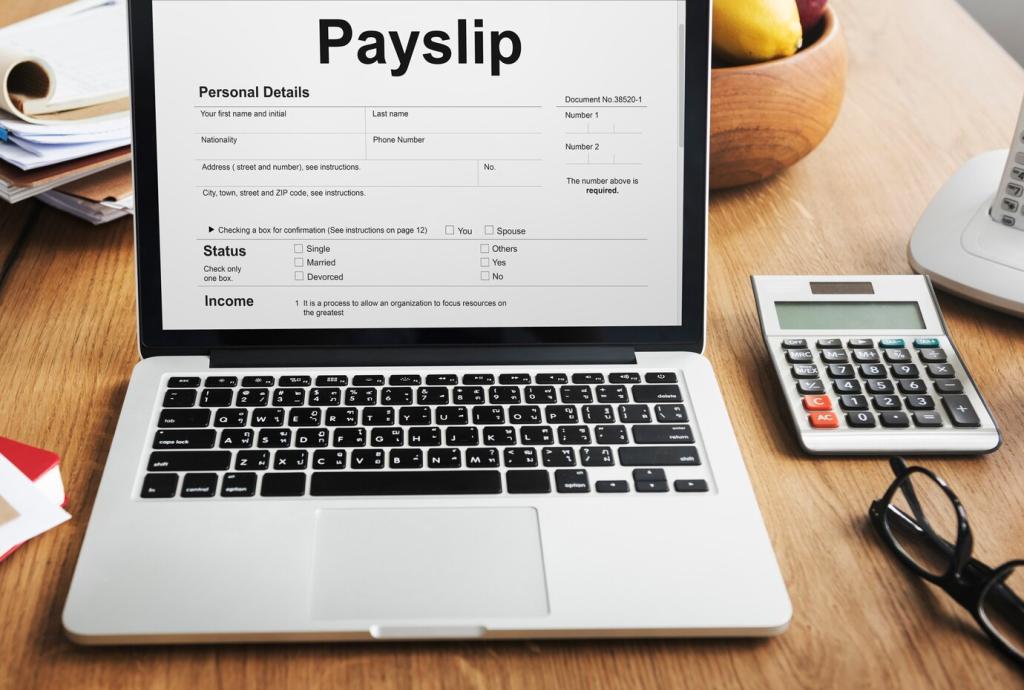Today’s Theme: The Role of Machine Learning in Payroll Automation
Explore how machine learning transforms payroll from a rule-heavy burden into a precise, proactive, and human-centered system. We’ll unpack real-world wins, risks, and practical steps you can take right now. Subscribe and join the conversation—your payroll insights matter.

Learning from Historical Pay Cycles
Instead of hardcoding every edge case, models learn from past payroll runs, corrections, and approvals. Over time, they predict likely exceptions, flag unusual inputs, and suggest fixes before payroll closes—reducing frantic, last-minute reconciliations.
Contextual Decisions, Not Just Calculations
Machine learning can interpret context such as location, contract type, and union rules to guide decisions. It helps the system suggest the right action for nuanced situations, like overlapping shifts or changing tax brackets, with transparent reasoning trails.
Anecdote: The Friday Night Save
One HR manager recalls a model flagging overtime anomalies at 6 p.m. on a Friday. A schedule import duplicated hours for a new team. The alert prevented overpayments and rework, and the team went home on time. Share your near-miss stories below.
Accuracy, Anomaly Detection, and Error Prevention
Catching Outlier Hours and Misapplied Rates
Unsupervised models cluster typical behavior and surface anomalies: impossible shift lengths, missing meal breaks, or rates misapplied after promotions. Payroll reviews the flagged items early, turning reactive fixes into quick, proactive confirmations.
Fraud Signals Without False Alarm Fatigue
Feature engineering combines login times, device fingerprints, schedule patterns, and approval timing. The result is targeted alerts that reduce noise, ensuring teams focus on meaningful risks instead of chasing benign irregularities every cycle.
Root-Cause Insights for Continuous Improvement
When errors recur, models correlate issues with specific sources such as a timekeeping integration, a policy mismatch, or a training gap. Teams fix the underlying cause rather than patching symptoms, increasing trust with every pay period.


Compliance That Keeps Pace with Change
Models embed geographic nuances—overtime rules, holiday pay, and tax thresholds. They suggest appropriate treatments per region and surface conflicts when employees split time across locations, making cross-border payroll less error-prone and stressful.
Compliance That Keeps Pace with Change
Explainable AI techniques translate decisions into understandable reasons: which features, thresholds, or historical cases influenced a recommendation. That clarity speeds audits and builds confidence with legal, finance, and the board.
Forecasting Payroll Costs and Cash Flow
Time-series models learn from seasonality, promotions, and hiring plans to forecast payroll costs with confidence intervals. Finance teams plan cash buffers proactively, avoiding scramble-mode funding decisions at month-end or quarter close.
Simulate changes—hiring surges, schedule mix, overtime caps, or benefit rate revisions. Leaders compare outcomes, pick the best path, and communicate timelines clearly to teams, improving transparency and morale during change.
A retailer used a payroll forecast to spot a looming overtime spike caused by overlapping store events. They adjusted staffing two weeks early, protected margins, and still delivered exceptional service. What seasonal patterns catch you off guard?


This is the heading
Lorem ipsum dolor sit amet, consectetur adipiscing elit. Ut elit tellus, luctus nec ullamcorper mattis, pulvinar dapibus leo.

This is the heading
Lorem ipsum dolor sit amet, consectetur adipiscing elit. Ut elit tellus, luctus nec ullamcorper mattis, pulvinar dapibus leo.
Data Foundations, Security, and MLOps
Consistent employee identifiers, normalized rates, and time-zone aware timestamps prevent subtle errors. Feature stores ensure reusable definitions for overtime, tenure, and premiums so models stay consistent across teams and time.


Data Foundations, Security, and MLOps
Sensitive payroll data demands encryption at rest and in transit, strict role-based access, and anonymization for experiments. Differential privacy can help analyze patterns without exposing individual pay details or identities.



